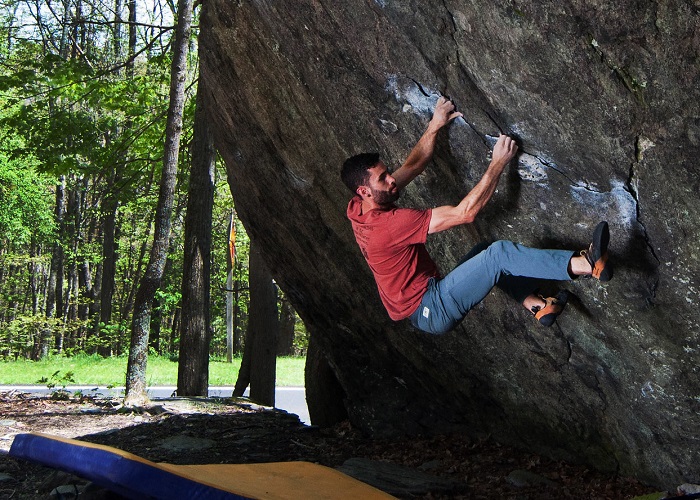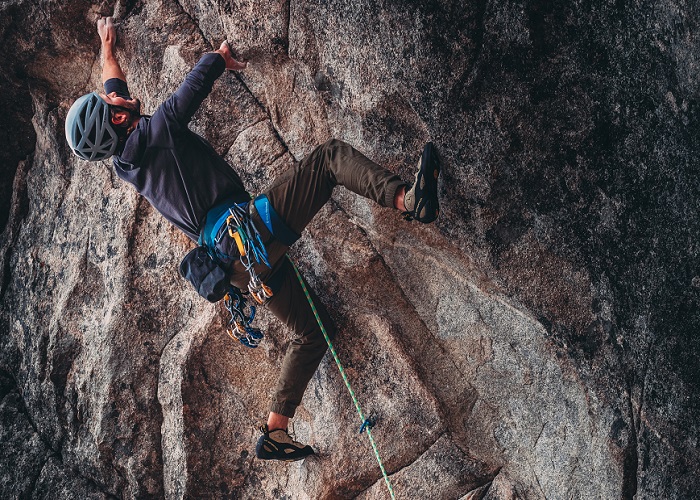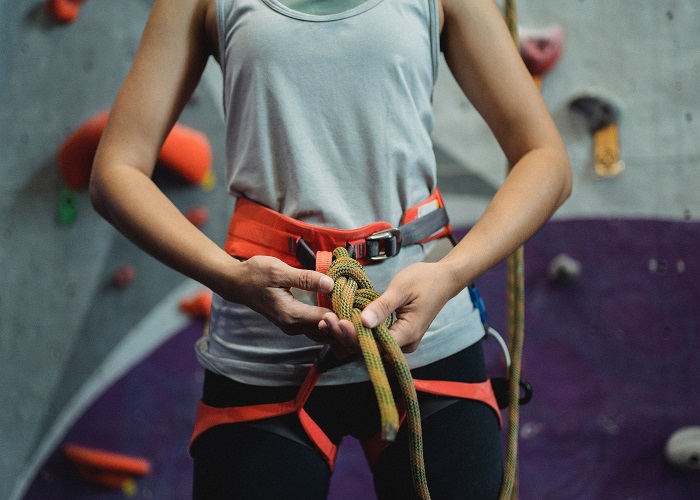Ever fancied trying out a brand new and exciting sport but not sure where to start?
Climbing has experienced a surge in popularity over the past few years and is continuing to grow. This niche sport keeps you fit and comes with many health benefits such as strengthening your muscles, improving your flexibility and helping improve coordination.
So if you’re someone that wants to try out this fantastic sport or learn more about it, you’ve come to the right place! Throughout this blog you will learn about the different types of climbing, the equipment needed and where you can start.
Types of Climbing
Bouldering


This is a form of free climbing which is performed on artificial rock walls or small rock formations without using ropes or harnesses. Because bouldering walls aren’t that high, bouldering crash pads (foam cushioned mats) are used instead to act as protection if you fall. Artificial climbing walls can be found both indoors and outdoors and this type of climbing was originally used for climbers to train before heading out to high and more challenging walls. However, bouldering has grown in popularity and has evolved into its own discipline, meaning people not only practice it for training purposes, but as a standalone sport too.
Sport Climbing


This type of climbing typically involves relying on permanent bolts and anchors fixed to the rock for protection and the climber using a rope and harness to ascend the route, as well as the aid of a ‘belayer’*. These permanent bolts and anchors are found on indoor climbing walls and at some locations outdoors in the UK. As each bolt is reached along the route, the climber has to attach a quickdraw** to the bolt and then clips the rope through the hanging end of the quickdraw.


Trad Climbing


Trad climbing (short for traditional climbing) is a style of climbing which is performed outdoors. With this type of climbing, all climbers are required to place their own protection* on the walls to stop them from falling, and remove it all once the pitch is complete. This makes it not only physically challenging, but adds a technical and mental aspect to the route too.
*Protection: this refers to a variety of devices employed to reduce risk and protect climbers. They include items such as nuts, camming devices and nuts. These items are placed into the rock, allowing a climber to place temporary anchor points on the rock during a climb.
Equipment




There is a variety of equipment used when climbing. Depending on what type of climbing you’re doing, will indicate what you will need. Here is list for the three types of climbing discussed and what you will need for each one:
Bouldering: climbing shoes, chalk, chalk bag, bouldering pad/mat
Sport climbing: climbing shoes, helmet, harness, chalk bag, chalk, rope, belay device, quick draws
Traditional climbing: climbing shoes, helmet, harness, chalk bag, chalk, carabiners, rope, belay device, quick draws, slings and protection (wires, stoppers, nuts, cams etc)
You can shop of all this equipment here at Go Outdoors! Plus, you can check out our Climbing with Black Diamond blog for further detail on the equipment.
Our Top Tips
Here are some of our top tips for getting into climbing:
- Start off with bouldering – this is a lower level style of climbing and will allow you to get to grips with the basics before heading out onto large climbing ascents.
- Buy the right gear – asses what you will need and be prepared! If you’re starting off with bouldering you will only need climbing shoes, chalk, a chalk bag and maybe a bouldering pad. (A pad is only needed outdoors as the indoor climbing walls have these)
- Learn with experts -there’s no better way to learn a new sport than to learn with those who are trained and experienced. Let them show you the ropes! (literally)
- Join a climbing club – make friends and have fun whilst learning to climb. Joining a club will motivate you and allow you to climb with others who love climbing too!

We interviewed professional climber and Black Diamond athlete Jim Pope. Watch the video below to hear how he entered the world of climbing and his top tips for those aspiring to take up this fascinating sport.
Where to Start
Whether you’d like to improve your health and fitness, start a new hobby or challenge yourself, if you’re serious about trying out climbing then go for it! Here are some useful websites…
If you want to find a climbing club, instructor or climbing wall (indoor and outdoor), check out these two websites:
- The BMC (British Mountaineering Council): https://www.thebmc.co.uk/climbing-wall-finder#clubs
- UK Climbing: https://www.ukclimbing.com/listings/
The MTA (Mountain Training Association) are the governing body for qualified leaders in the outdoors. This link allows you to search for qualified instructors if you want them to take you out on adventures:
Mountain Training Association: https://www.mountain-training.org/find-a-leader
We have an extensive range of climbing gear from a range of brands here at Go Outdoors. Why not have a browse and begin your climbing journey today?
